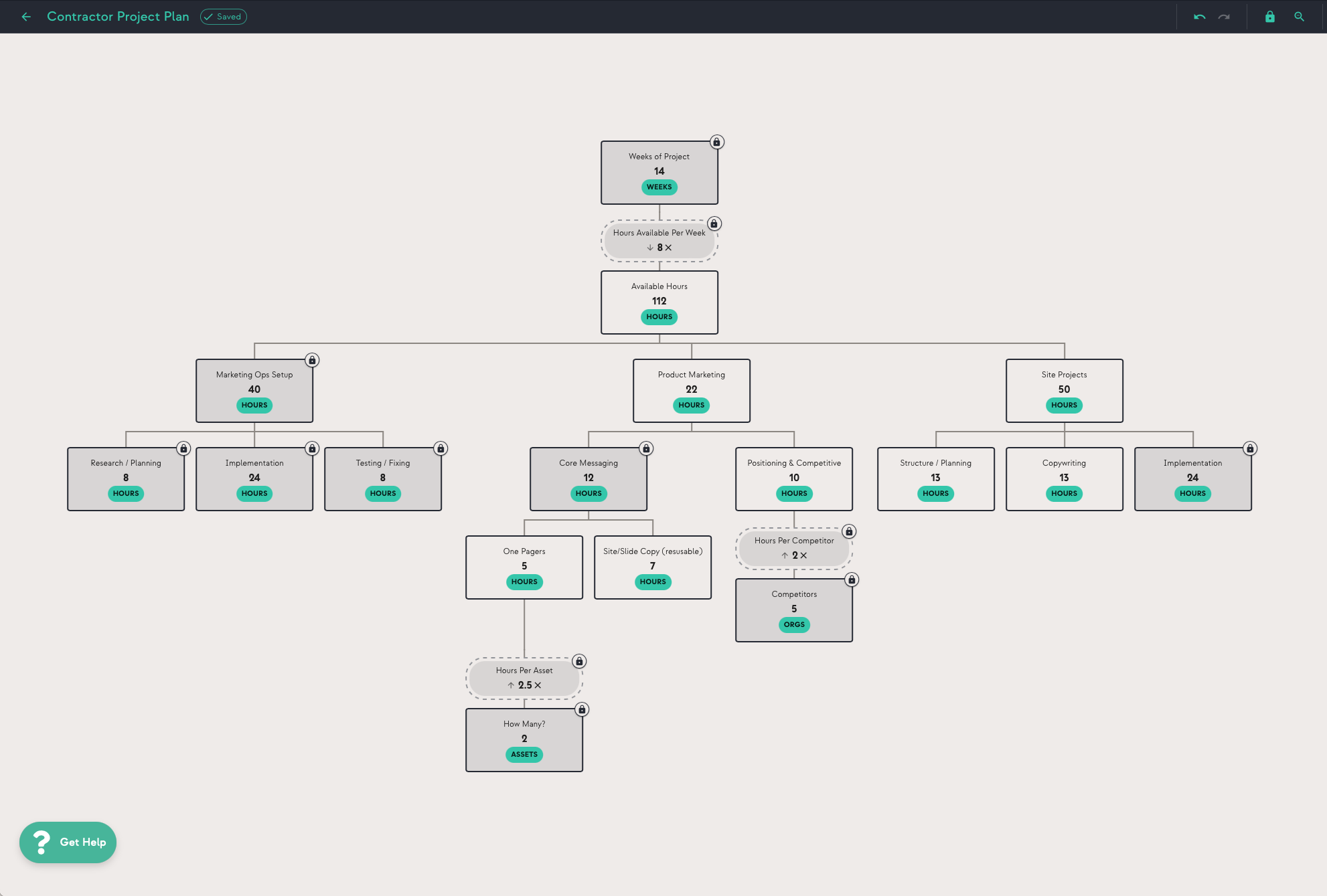As mentioned earlier this summer, our CTO Brian Cunningham has decided to reassign all non-essential personnel towards “short-term revenue generation”, which means I have to go back to work to fund this incredible enterprise.
Since I need flexibility to also run this high-tech side-hustle and occasionally hug my children, I’m going the contracting/consulting route.
Building a Proposal
I’ve done consulting before, but I’m not much of a business development person, and I have a hard time turning what I can do for people into blocks of hours and amounts of money. For one project, I was asked if I could deliver a whole host of different things, when in reality I have (at best) a couple hours each week available to dedicate.
What should I work on? How much work should I put into each thing? How long would the chosen pile of things take if I worked on this for 6 hours a week, or 8?
Hilariously, I started building a spreadsheet to figure this out, but I quickly ran into the quintessential Resolution-brain problem — I wanted to be able to change both sides of my model, so I could see what how many hours (and thus, weeks) I’d need with different project expectations, OR, crucially, what would happen to my project outputs if I had more or less hours to work with. No spreadsheet could support both of those things in a single model, because that’s not how spreadsheets work.
The Resolution Alternative

Once I realized that I was really just allocating hours and turning them into different things (task-allocated hours, or maybe project outputs on one end, and weeks on the other), using Resolution made way more sense. I used the Units of Hours & Weeks for most of the model, and a few project outputs like Assets & Orgs, so I could play with different rates. Those rates measure things like “how many hours to make a one-pager”, or “how long does it take to fully assess one competitor”. When I couldn’t specify project outputs, I just… didn’t do it. Instead, I let the hours speak for themselves. Setting up a CRM will take a while, but it’s not based on number of contacts or whatever.
I found this whole exercise to be incredibly helpful. In classic Resolution fashion, I felt much better confidently stating that this work would take months, because I had the receipts, and when you look at the individual pieces, they make sense.
Here’s the model. Seriously, check it out! You could do this with just about any form of time management.
Back to work. Resolution will be humming along like this for the next few months, so keep on building and drop me/us a line if you have any questions or issues. But we won’t be putting out new features for a bit while we save up our developmental ammo. Trust me, no one is more eager to take this thing to the next level — not just because I invented it, but because I use it for stuff like this!

